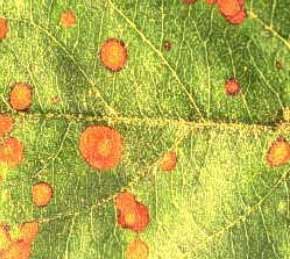|
|
|
Fungal
tree diseases

Fungi are transmitted through soil or air
and are the major cause of disease in trees. Some affect a wide
range of eucalypts while others are species specific. They damage
roots, wood, leaves and flowers.
Symptoms of fungal disease vary between plants and plant parts.
It is not always easy to identify which fungus caused a disease,
or if the disease was actually caused by a fungi at all. Other
agents—for example, bacteria and insects—can cause
similar symptoms including leaf necrosis, wrinkling or leaf
spotting. Sap-sucking insects and leaf miners commonly act as
carries of pathogens further complicating the diagnosis. Even
nutrient deficiencies can result in leaf damage that looks like
fungal infections.
Correctly diagnosing a fungal disease often requires specialised
knowledge. Three factors are necessary for a disease to develop:
• the presence of a pathogen—the disease-causing agent;
• plants susceptible to that particular pathogen; and
• an environment that is suitable for disease development.
The extent to which a plant is affected by a disease depends
on the health of the host, the pathogen’s virulence, the
environmental conditions, and how these factors interact with
each other. Because forest habitats can be very complex, treating
a disease might not be straightforward, possible or practical.
Back to top
|
|
